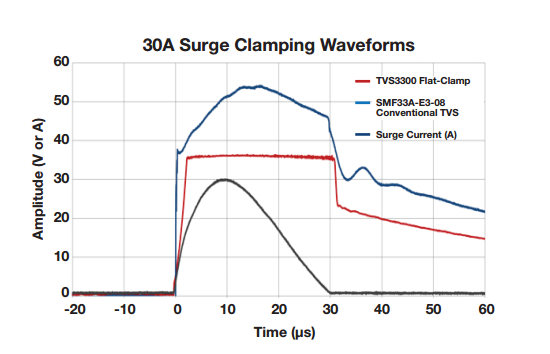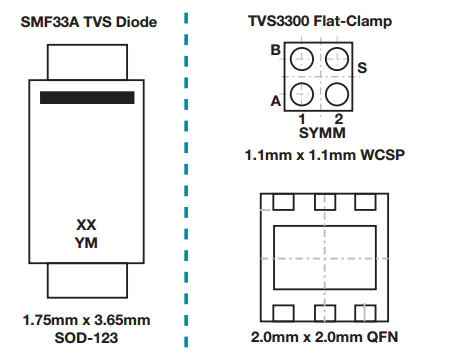SSZT751 april 2018 TVS3300
Conventional transient voltage suppression (TVS) diodes have been essential building blocks in system designs for decades. They protect against transient surge events, and many designers rely on TVS diodes to provide an adequate level of surge immunity to protect sensitive electronics at the heart of their systems.
Many end applications, from industrial sensors and programmable logic controller (PLC) input/output (I/O) modules to appliances and medical equipment, must comply with international standards for surge immunity such as International Electrotechnical Commission (IEC) 61000-4-5.
Although conventional TVS diodes have been the safe option to ensure robust and reliable surge immunity, they are far from perfect. In fact, most designs exposed to harsh environments that require surge immunity are likely to be over-designed due to inefficient clamping and the inherent performance variability of conventional TVS protection diodes across temperature. You must settle for solutions with larger package sizes, excessive line capacitance and higher static leakage current. And you must carefully select downstream components to ensure the residual voltage and current from a surge event doesn’t damage downstream components and lead to system failure.
Because TVS diode technology hasn’t changed in decades, many designers simply reuse their TVS protection schemes from generation to generation. But, it’s time to pull out your schematics and look for a better surge protection alternative. TI’s flat clamps are changing the game, providing improved surge protection with more flexibility so that you can optimize for cost, size and performance.
 Figure 1 Clamping Comparison between
Flat-clamp Technology and Traditional TVS Diodes
Figure 1 Clamping Comparison between
Flat-clamp Technology and Traditional TVS DiodesWould a robust surge protection solution – with as much as a 90% smaller package footprint (as shown in Figure 2), 50% lower static leakage current and significantly lower capacitance – get you to evaluate your TVS protection scheme? What if the clamping voltage was more precise, clamping at a consistent, flat voltage across the duration of the surge event and saving you the cost of high-voltage-tolerant downstream components?
 Figure 2 Flat-clamp Packages Can Have a
90% Area Reduction on the Printed Circuit Board
Figure 2 Flat-clamp Packages Can Have a
90% Area Reduction on the Printed Circuit BoardIt’s easy to ignore TVS diodes when redesigning your system and reuse a conventional TVS in your next-generation design. However, robust surge protection can’t be ignored, and it’s time to reconsider that portion of the schematic. There is a better alternative with improved clamping performance that also saves board space and downstream system costs.
Additional Resources
- Read TI’s whitepaper describing the new flat-clamp surge-protection technology.
- Start designing now with the TVS3300 evaluation module.